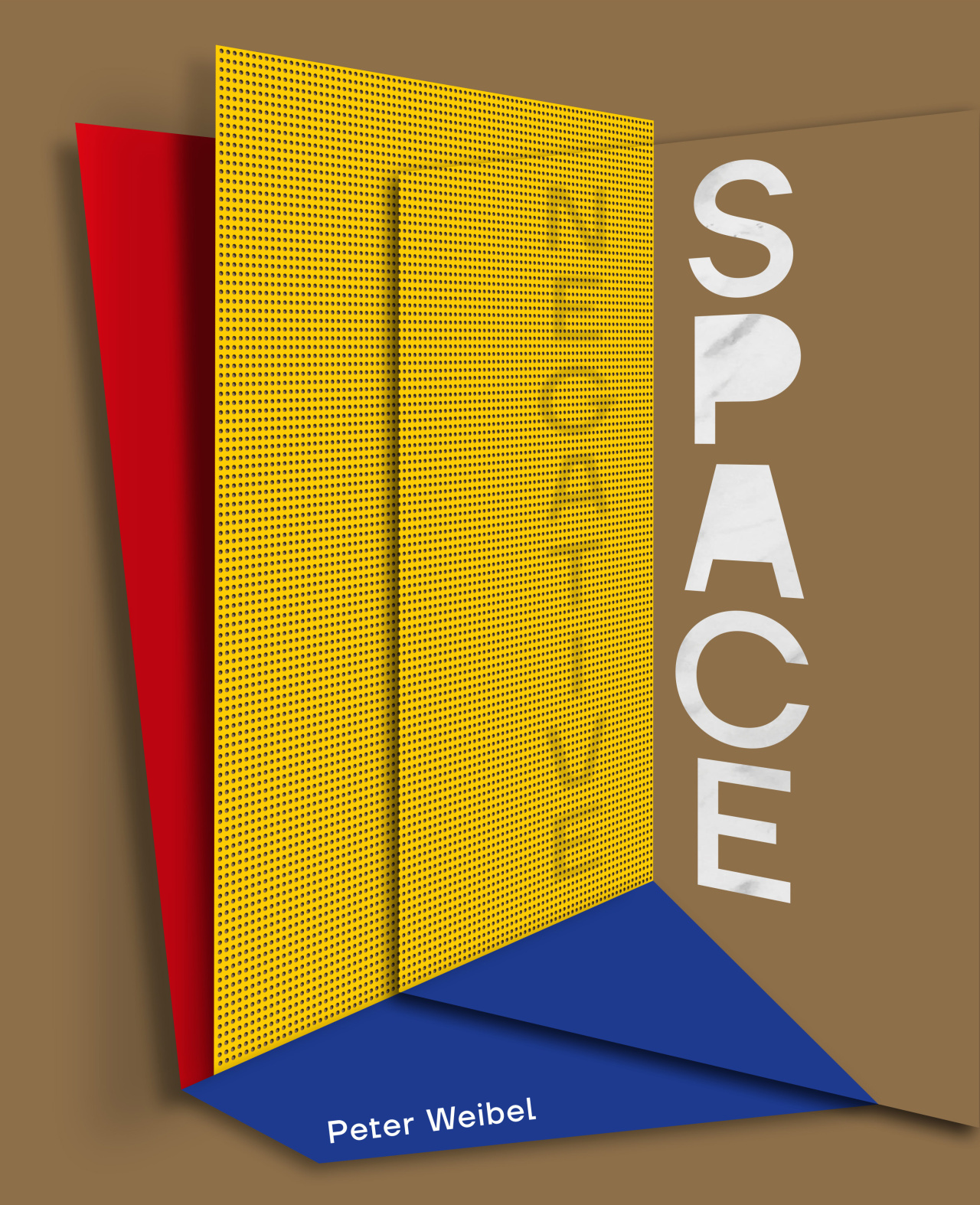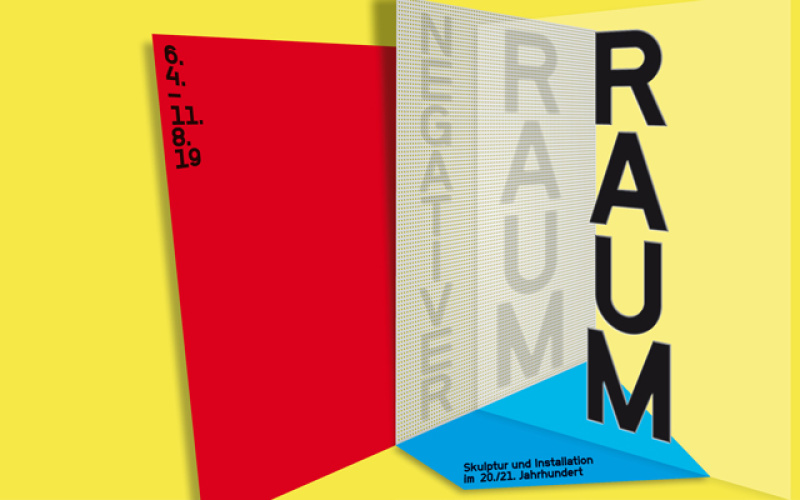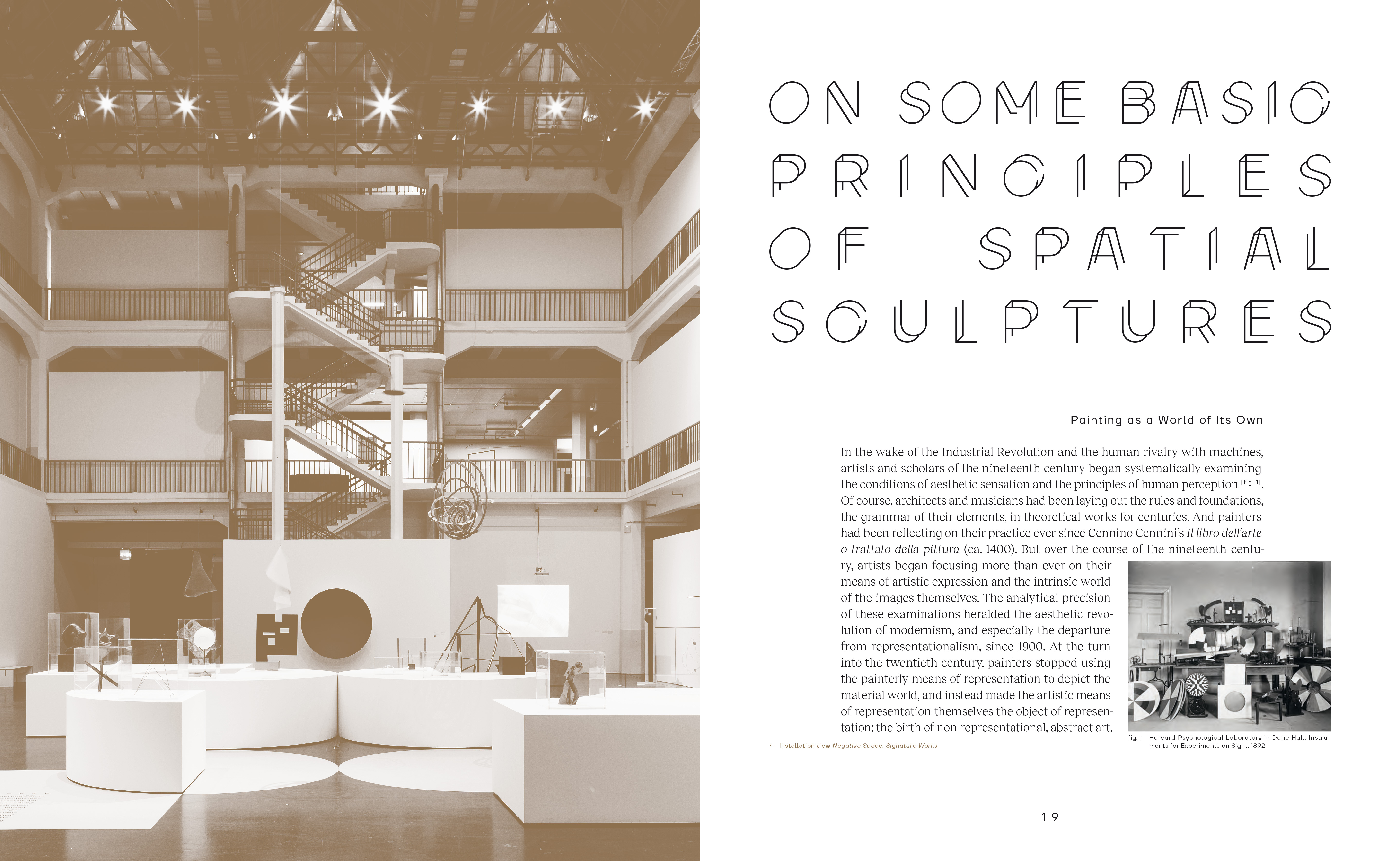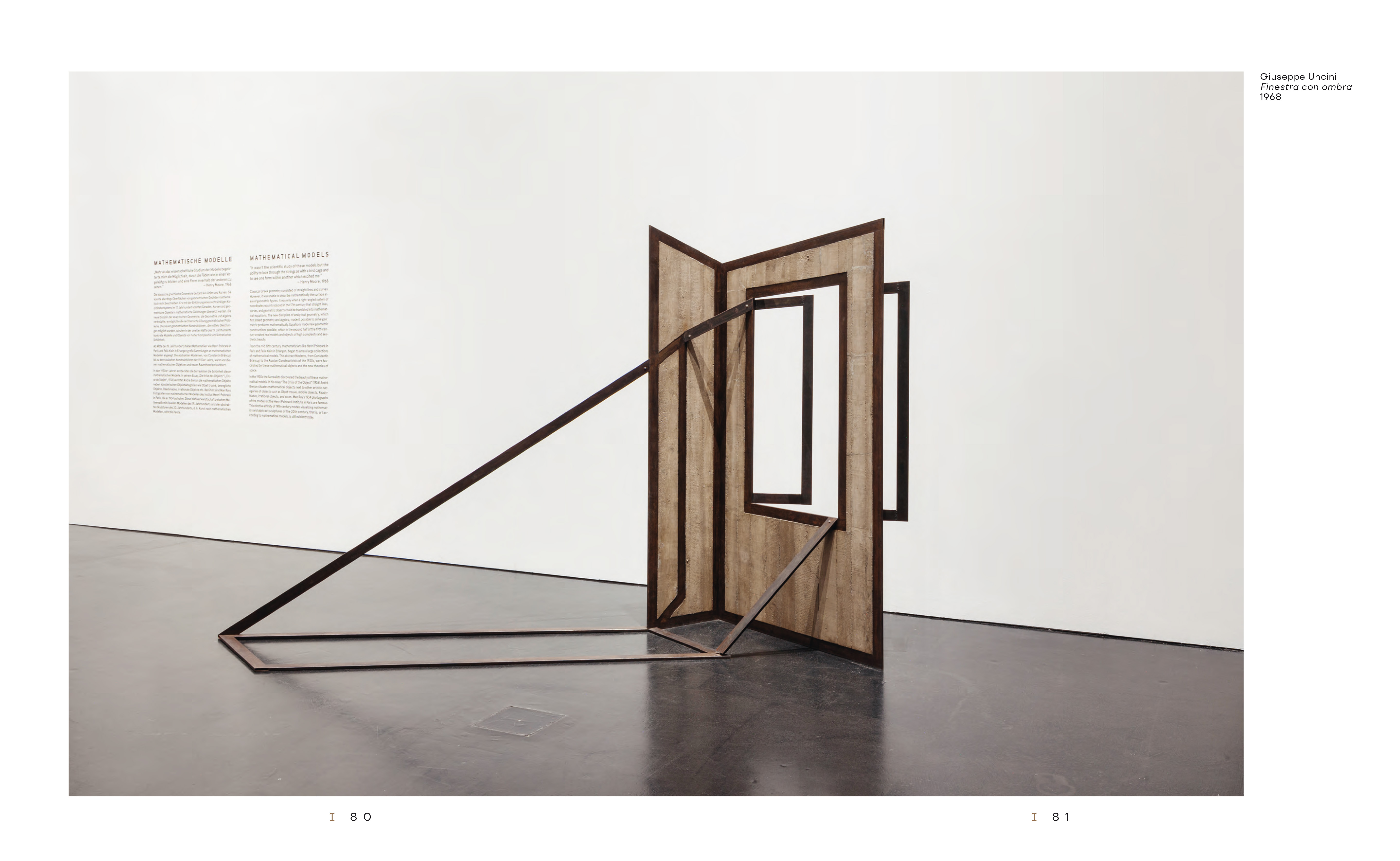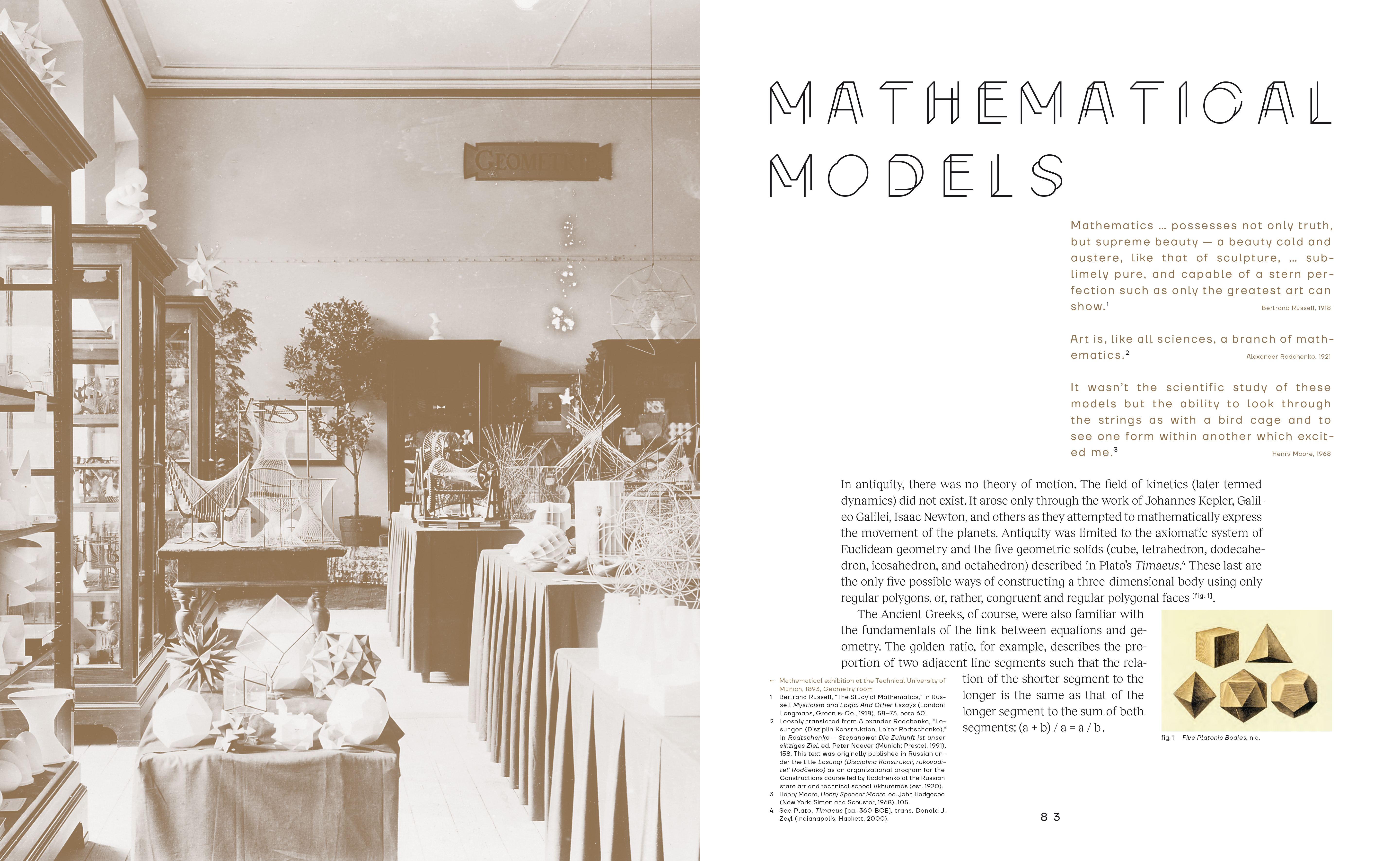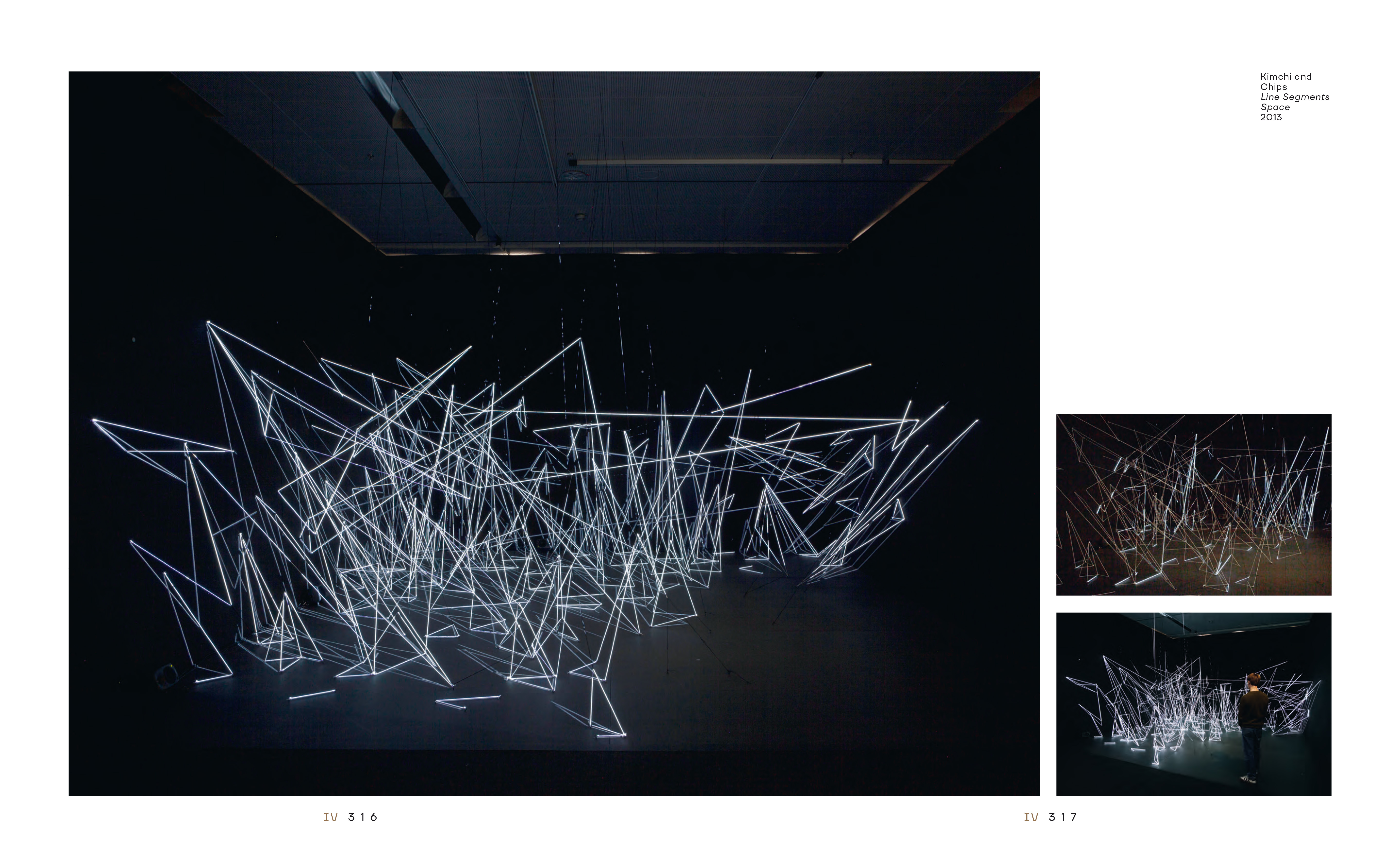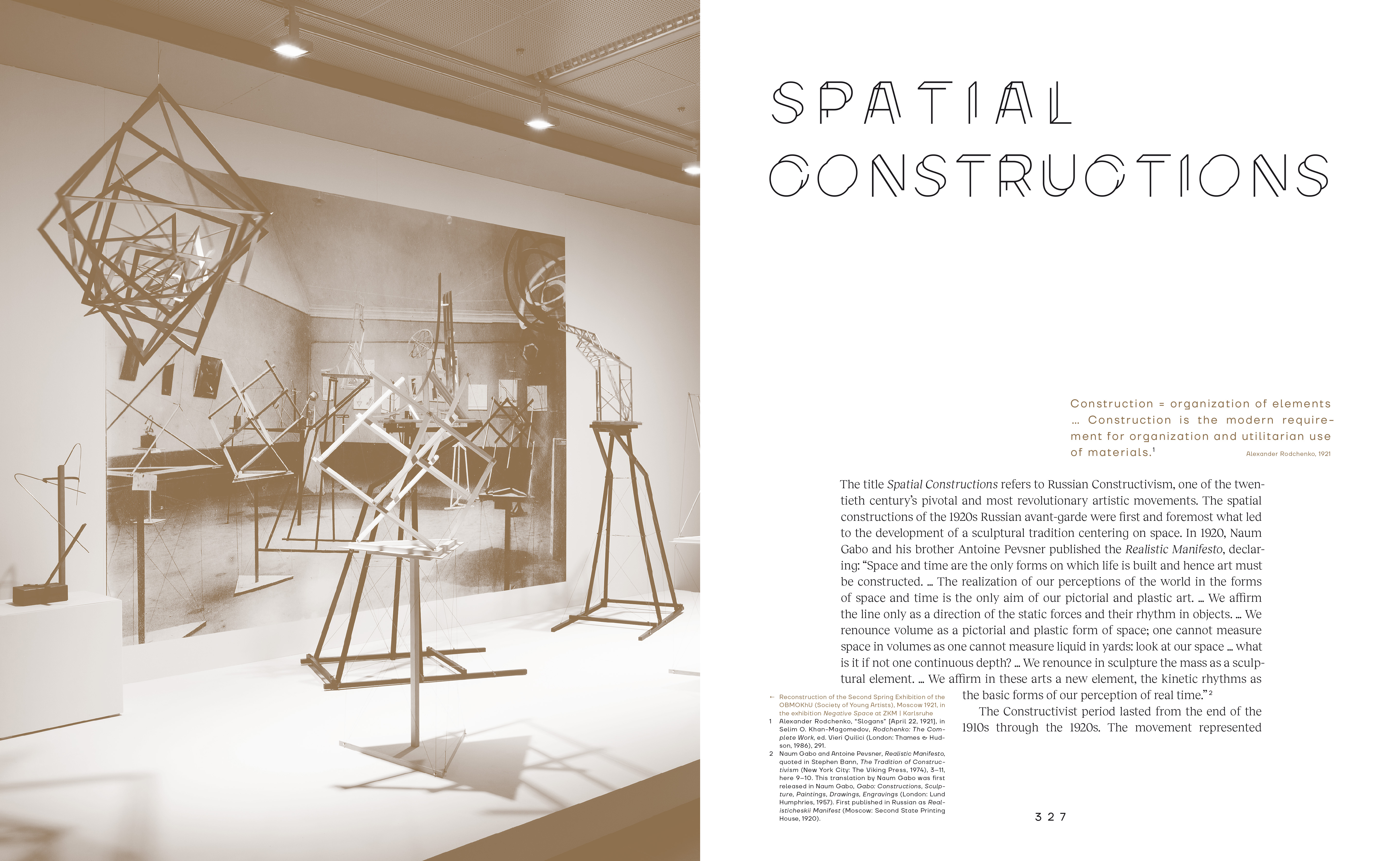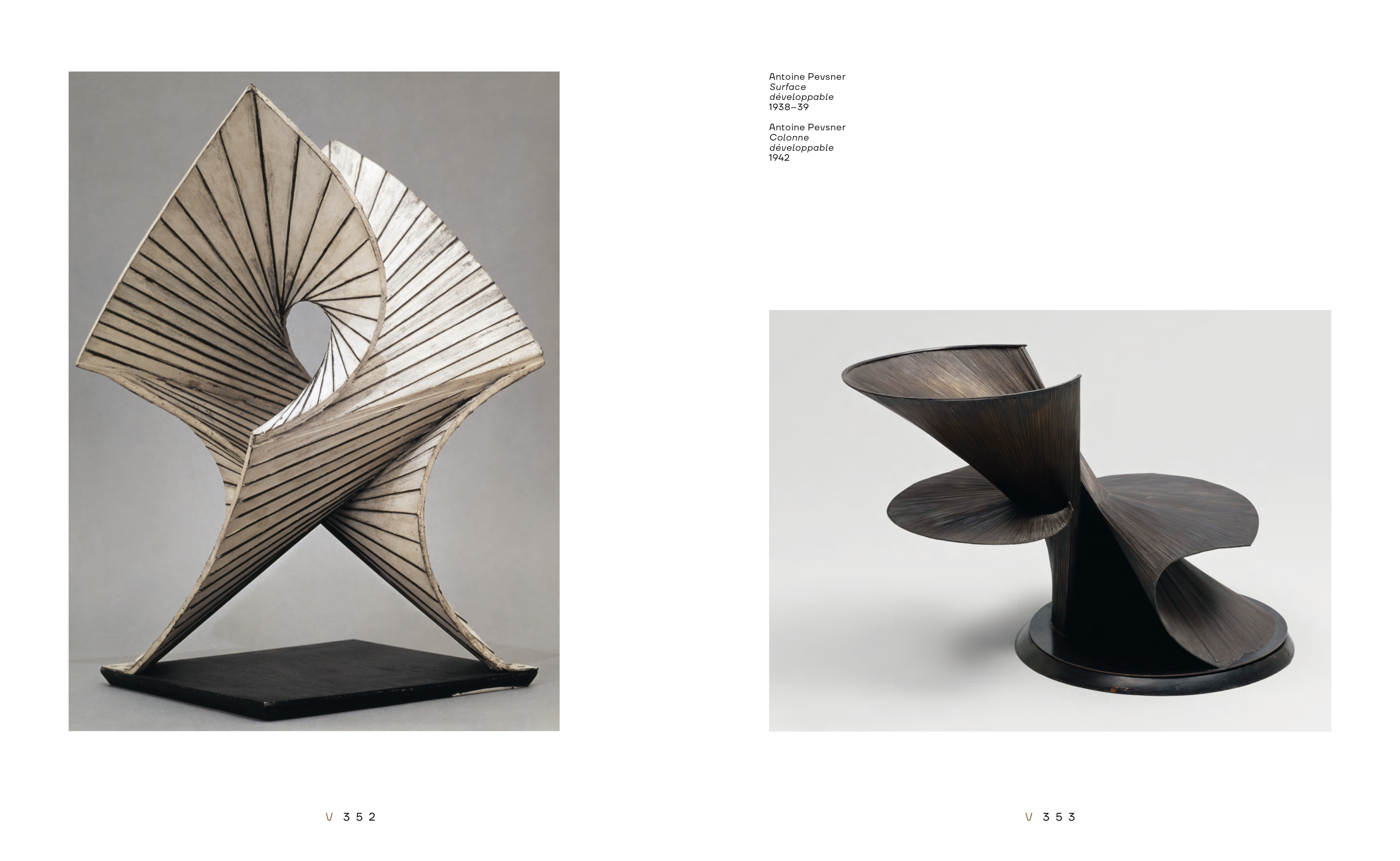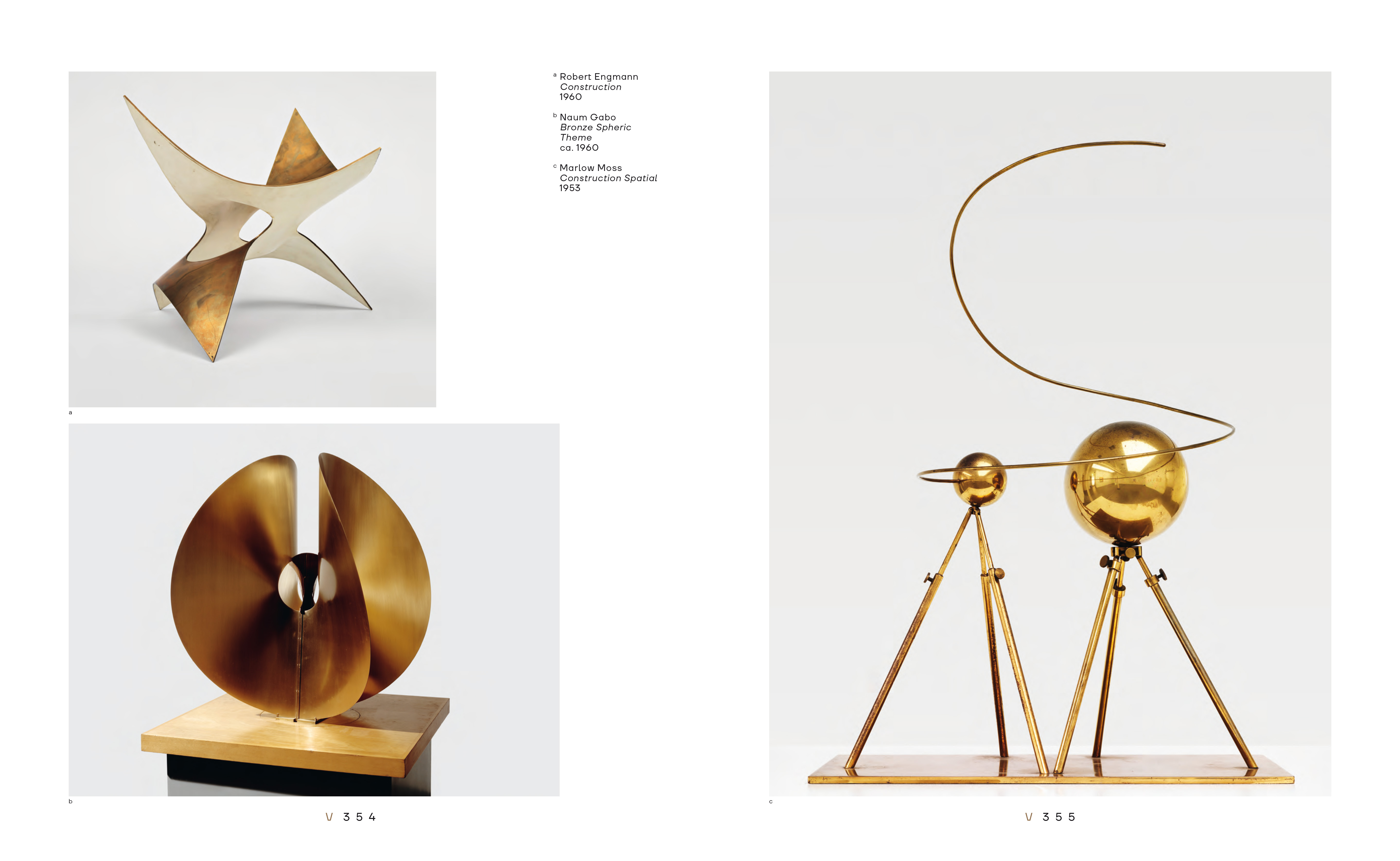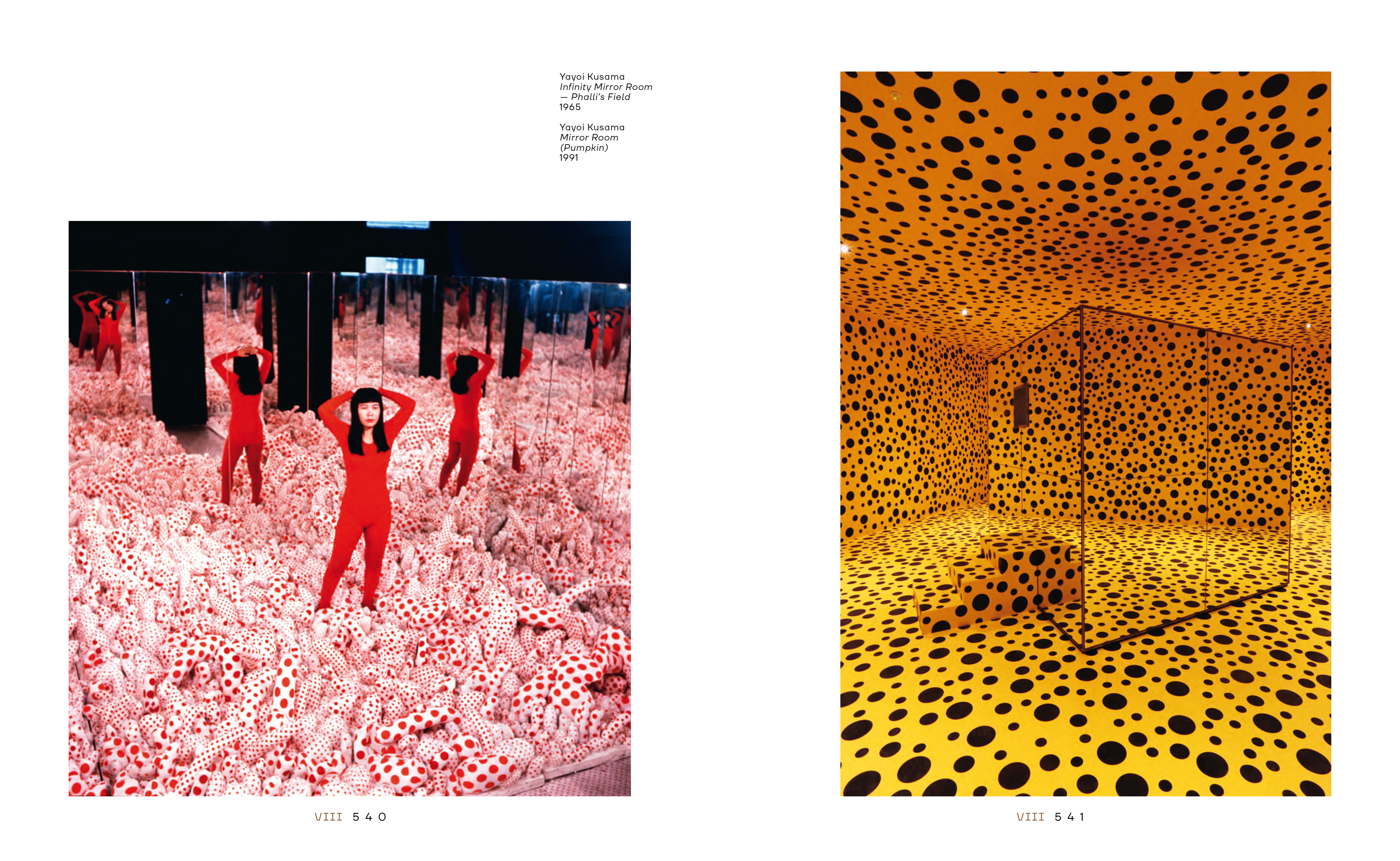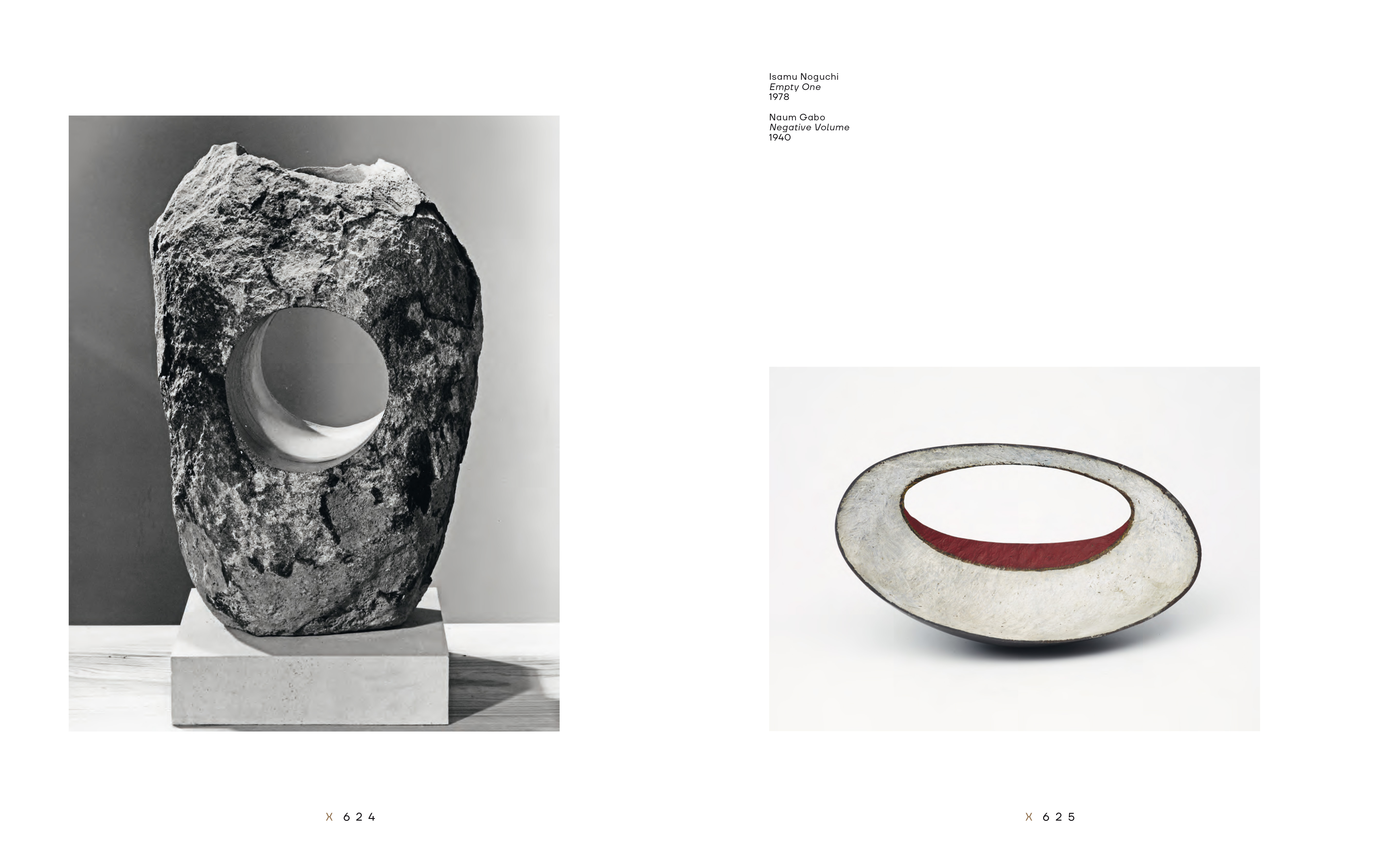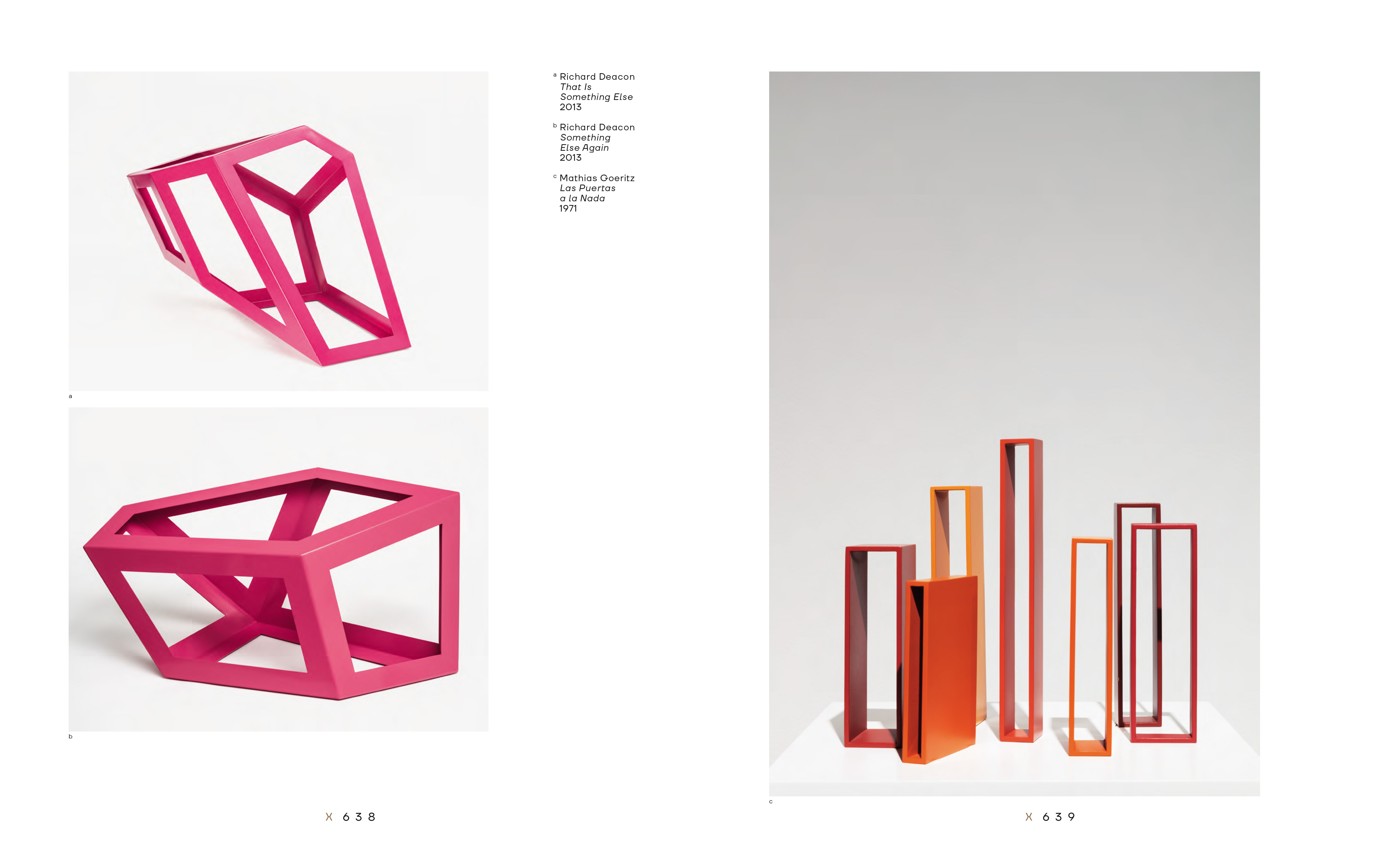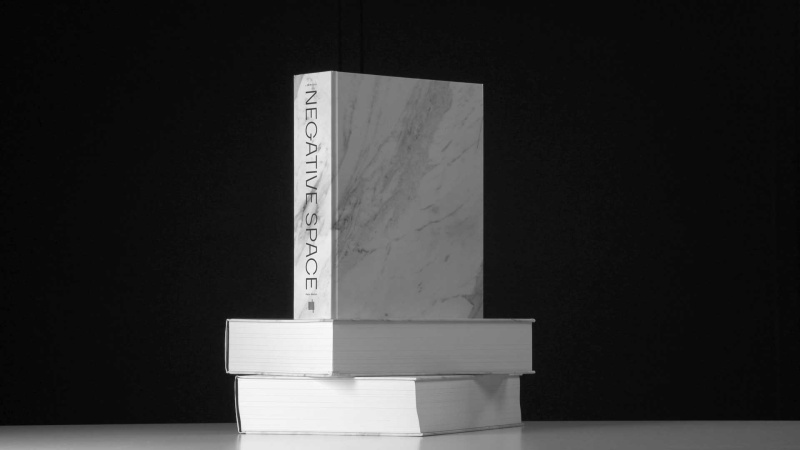- Exhibition catalog
Negative Space
Trajectories of Sculpture in the 20th and 21st Centuries
2021
- Type of publication
- Exhibition catalog
- Author / Editor
- Peter Weibel (ed.)
- Publishing house, place
- The MIT Press, Cambridge, MA / London, England
- Physical Description
- 704 p.; ca. 1150; 30 x 24,5 cm; hardcover, Dust jacket with fold out space sculpture
- Language
- English
- Year
- 2021
- ISBN
- 978-0-262-04486-8
- Content
Before 1900, sculpture was based on the mimetic embodiment of humans, animals, and objects. Space itself was not its concern. But with the new experiences of space and time brought about by the Industrial Revolution and its technology — moving machines, such as trains and cars, and the emerging telecommunications media — the historical categories of plastic arts such as mass, volume, and gravity, derived from the body, until then the only medium of spatial and temporal experience, were rigorously denied.
This radical rupture from body-bound and object-oriented figurative sculpture and the transition to abstract vectors of space disclose a paradox: when sculpture after 1900 conceived the shaping of space as its only domain, these spatial sculptures were defined through negations of hitherto dominant sculptural characteristics:
void instead of volume
vacuum instead of mass
airy instead of solid
weightless instead of heavy
virtual instead of real
shadow instead of light
abstract instead of figurativeArtists focused on the new shapes of these empty, interstitial, and negative spaces.
Using rediscovered documents from art history and cross-bridging the artistic with mathematical models, this monumental and richly illustrated book from ZKM | Center for Art and Media Karlsruhe demonstrates a new theory about modern sculpture’s fundamental differences from works of the past. Negative Space unfolds the revolutionary trajectories of abstract sculpture in the twentieth and twenty-first centuries: from linear and planar, suspended and pneumatic sculptures to virtual volumes and immersive environments.
Production / Corporation / Exhibition
Organization / Institution
Team
Project management:
Patrick Trappendreher
Design:
2xGoldstein (Andrew Golstein, Jeff Goldstein, Joshua Kaiss)
